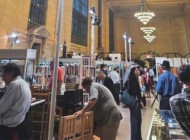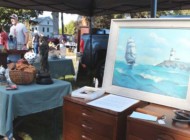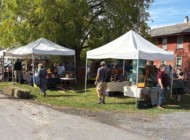By Greg Smith
ONLINE – As any auctioneer or dealer on the show circuit can attest, events are drivers for sales. They instill a pressure on a buyer as they impart a sense of temporary immediacy or the possibility of loss, not felt with gloom but rather subtly or subconsciously acknowledged in the architecture of the experience: the event is now and the event will end, so you better get to doing.
As the pandemic lingers on and shows continue to spread few and far between, the scheduled and publicized website update is growing in popularity among dealers who want to create a selling event, or a little magic, of their own.
The idea is by no means new. Sears began mail-order business through catalog distribution in 1887. It is not even new when applied to the digital age – some dealers have been doing scheduled website updates since the early aughts.
The website update is synonymous with “fresh,” a multi-pronged word that, any way you swing it, is music to a collector’s ears. The idea that an object has come to the market, finally, after decades of being squirreled away on a private collector’s or their descendant’s shelf – while not always accurate – is one that instills a drive to buy. Add to that the idea that buying antiques has always been a game of getting there first or being the first to recognize the strength of an object. Both collectors and dealers live and die by the early worm, because the only thing that keeps anyone with an eye off something great is its price. The scheduled website update then provides the structure for obtaining fresh objects in a manner congruent with the selling events that buyers are familiar with: here’s the address, date and time – be there or be square.
And as we understand, many are showing up.
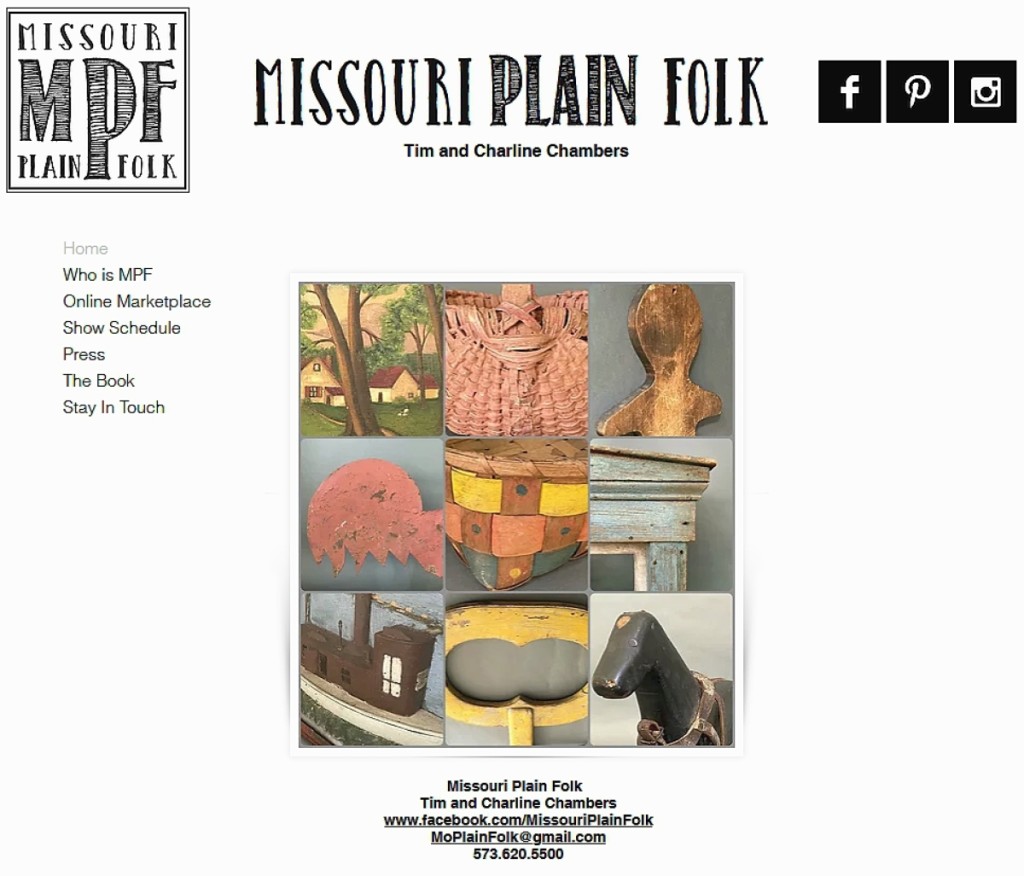
In their inaugural site update sale, Tim and Charline Chambers of Missouri Plain Folk sold a dozen, or about half of the offerings they uploaded. The site is viewable at www.missouriplainfolk.com
Tim & Charline Chambers of Missouri Plain Folk, Sikeston, Mo., created their website at www.missouriplainfolk.com about eight years ago, but as show dealers, they had always taken the model of show first, website second.
“I kept it current enough, but it wasn’t the first thing on my radar,” Tim Chambers said. “I was so active with shows and had a lot to do, so it was a way to show fresh material in the downtime.”
As this summer limped on, Chambers found himself doing a sale on his website in July and promoting it through his social media channels, where he has 3,900 followers on Facebook alone.
“The sale was very successful,” he said. “I sold a couple dozen things. All of the sudden I was reaching near the end of it and I thought ‘my website is empty, what am I going to do?'”
So he bought more things and photographed it all and decided to publicize a website update.
“I started teasing the update around the end of July and I went live with the update on Wednesday, August 5. I ended up adding 22 fresh things on Wednesday night at 5 pm, and by Saturday night I had sold a dozen of them.”
Chambers said the buyers are a mix of old and new and he is shipping everywhere around the country.
“It was so well received that I’ve had people already ask me when the next website update is,” he said. “I don’t have enough things to put on! Business is actually really good, in a way, I want people to be encouraged.”
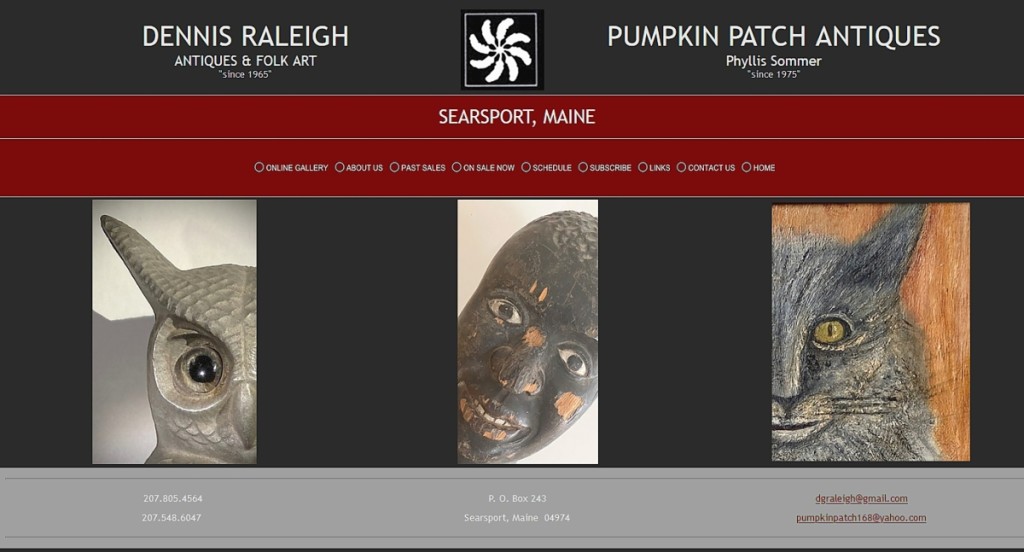
Dennis Raleigh’s website shows off his distinct eye towards folk art and antiques. His update on August 22 produced ten sales. His next update at www.dennisraleighantiques.com will occur towards the end of September.
On the flip side of the coin, Dennis Raleigh of Dennis Raleigh Antiques & Folk Art, Searsport, Maine, has been selling on website updates for 17 years at www.dennisraleighantiques.com, and he has never missed a month.
“Like all websites, in the beginning, it was meager at best, but over 17 years it has grown nicely,” Raleigh said. “I contribute all of the success to the update, once a month. I’ll add 20-25 items to the site each time. “
We caught up with Raleigh about four days after his Saturday, August 22 update, and he said he had already sold ten of the 22 items.
He pushes people to his website via an email list of about 1,500 people, combined with his social media accounts, particularly Instagram.
“The website has been noticeably better in the pandemic,” Raleigh noted. “I’ve said all along, the pandemic may keep people pent up in their houses, but it hasn’t diminished their appetite for antiques. The website has been quite active this year.”
Raleigh typically steers clear of furniture, as he says those collectors like to go over those pieces in person. But the rest, even if it is a sizable weathervane, will get posted. Raleigh writes thorough condition reports with an eye towards the initial experience of a customer opening a package and going over the piece. He said he would not want anyone to be surprised to see a nick that he did not describe or provide evidence of in photos.
“Between myself and my wife Phyllis Sommer, we have between us more than 100 years in the business – that establishes confidence in people. You don’t stay in business that long unless you’re doing something right,” he said.
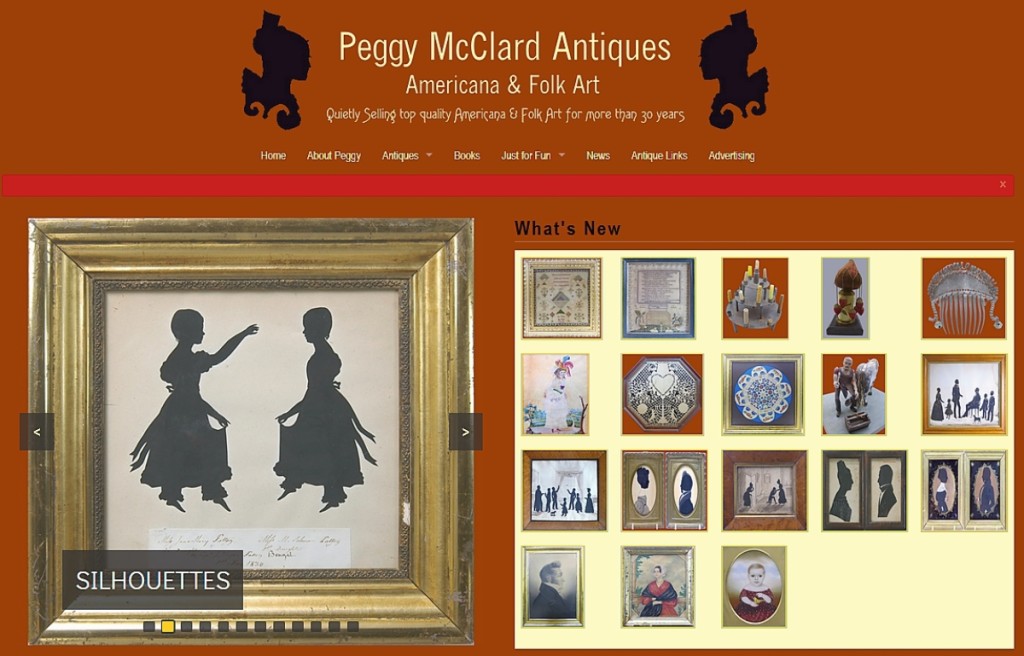
Silhouettes, portraits and framed folk art find new homes in the monthly update at Peggy McClard’s website, www.peggymcclard.com.
Another devotee of the model is Peggy McClard of Peggy McClard Antiques, whose site www.peggymcclard.com receives an update about every month.
She said, “I have a pretty specialized business, I sell mostly framed items: silhouettes, portraits and framed folk art. When I do a website update, I usually try and have one or two things that are under $200, those generally sell right away. Then sells the folk portraits and then the silhouettes.”
McClard will usually upload at least six and up to 15 objects at a time, a process she has been working at for about 15 years now.
She said she pulls her existing customers into the update via her email list and augments it with social media postings across collecting groups. “I’m getting new customers frequently from Facebook,” she said. “I also do an email blast; those people generally buy pretty quickly after the update. New customers might look a little bit and ask more questions because they don’t know who I am. But I try and drive them all to the website because I have so much information there.”
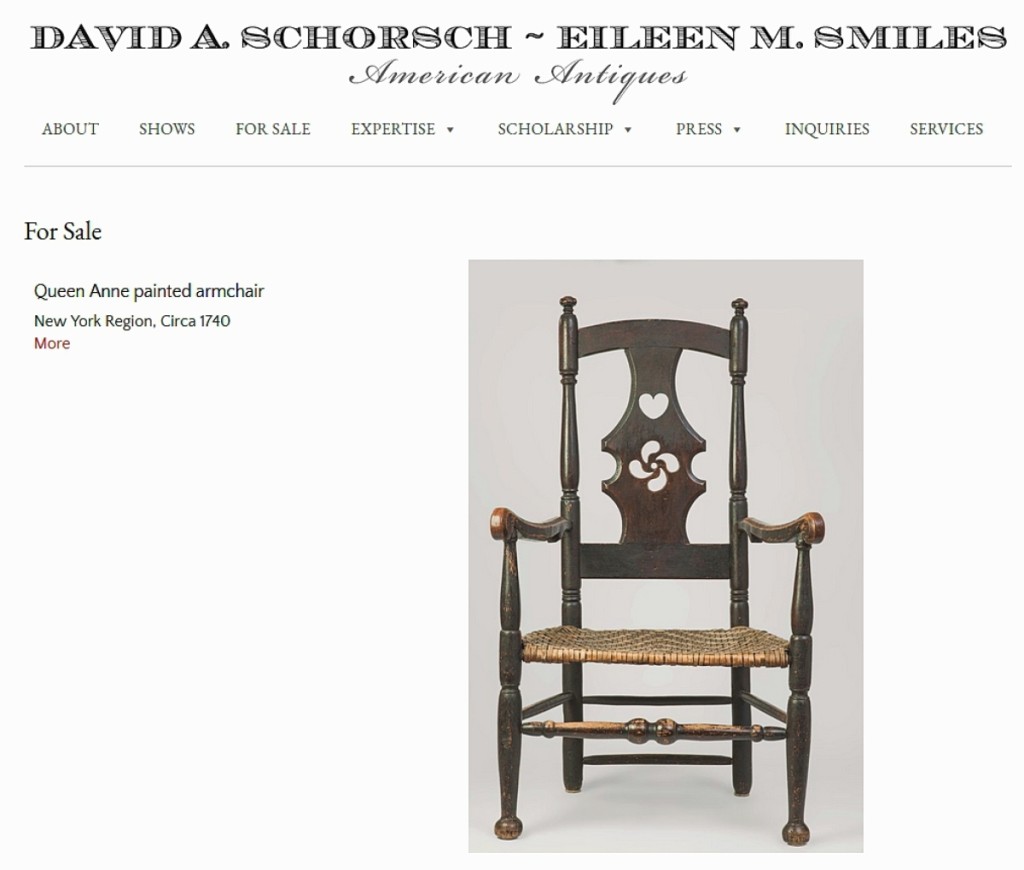
The first site update for David Schorsch & Eileen Smiles featured this New York Queen Anne painted armchair with a carved heart and pinwheel to the back, circa 1740. Schorsch said the regular updates will be small in size but will cover a wide range of material that the dealer has on offer. The site is at www.americanantiqueart.com.
We caught up with Woodbury, Conn., dealer David Schorsch of David A. Schorsch & Eileen Smiles, American Antiques, on the day of his premier website update at www.americanantiqueart.com.
“We started with a Queen Anne armchair,” he said of his lone addition to the site that day.
Schorsch’s updates will take on a more curatorial and focused approach. “We’ll certainly update with at least one thing. If I have a grouping of things, or things from a certain collection, there may be more,” he said.
The dealer noted that in the past he would do about one big update every six months or so. He recently completed an overhaul to his website that optimized it for mobile and made it more navigable.
“We’re going to present any kind of object that comes through our hands. It could be a $1,000 object or it could be a painting worth $1 million,” he said. “I treat our general advertising that way – I’ll advertise something under $5,000 into the stratosphere if it’s reflective of what I deal in. Every dealer has a range of objects.”
Schorsch said he is going to introduce media into these updates, among other things focusing on the names within the provenance lines of the material he sells. His goal is to tell the stories of bygone dealers and collectors who built the market in its golden era.
He said, “Whatever can drive people to the website and make it interesting and offer something that other people can’t. All of a sudden I looked around, and I wouldn’t say I’m the last man standing, but I’m one of them. I have information between my ears that people would find entertaining.”
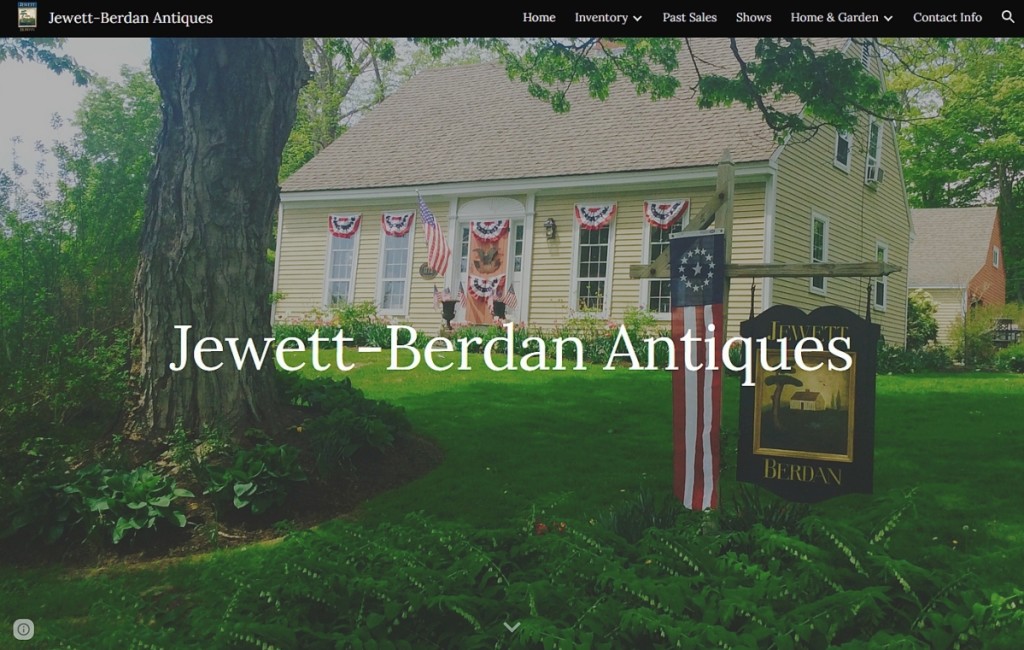
Visitors to Jewett-Berdan’s website will feel as if they are pulling into the driveway of the Newcastle, Maine, dealers’ home. On their initial website launch, the dealers said they sold around ten objects, with their next upload scheduled for September 15. The site is at www.jewett-berdan.com.
Also new to the update sale is Tom Jewett and Butch Berdan of Jewett-Berdan Antiques, Newcastle, Maine, who are fresh off a redesign of their site at www.jewett-berdan.com. The dealers launched their site on July 31 and sold ten of the 20-some items. They plan to add around 20 pieces with every update.
“We found it very successful,” Jewett said. “We used to have a website and we kind of did away with it because we were always too busy with shows. But I’m glad we did it, I’m hoping with each month that goes by we’ll pick up new customers. Out of those ten sales, three were to new customers, the rest were to people we’ve dealt with over the years from shows.”
The dealers’ website update occurred about six days before the New Hampshire Antiques Show went live online, and that drove further sales for the dealers off their site.
“Folk art seems to be selling better,” Jewett said. “That and what we categorize as decorative smalls. But folk art seems to be where it’s at, for us anyways. I’m surprised by the things we’ve sold. People are still buying, it’s working. It keeps us on the hunt to buy and find things.”
Like others, the dealers push people to their website from their social media accounts, including posting snippets to collecting groups, which has been successful, Jewett said.
Jewett-Berdan’s next website update is on September 15.
The website update is just another tool in the dealer’s kit. It is both direct and isolated, which comes with pros and cons. A benefit is the limelight: it is a one-dealer show. The only con is found within the elbow grease, the fact that dealers are required to run their own marketing machine to promote it and pull buyers into it. But the feedback is in: once it gets going, it’s good.

